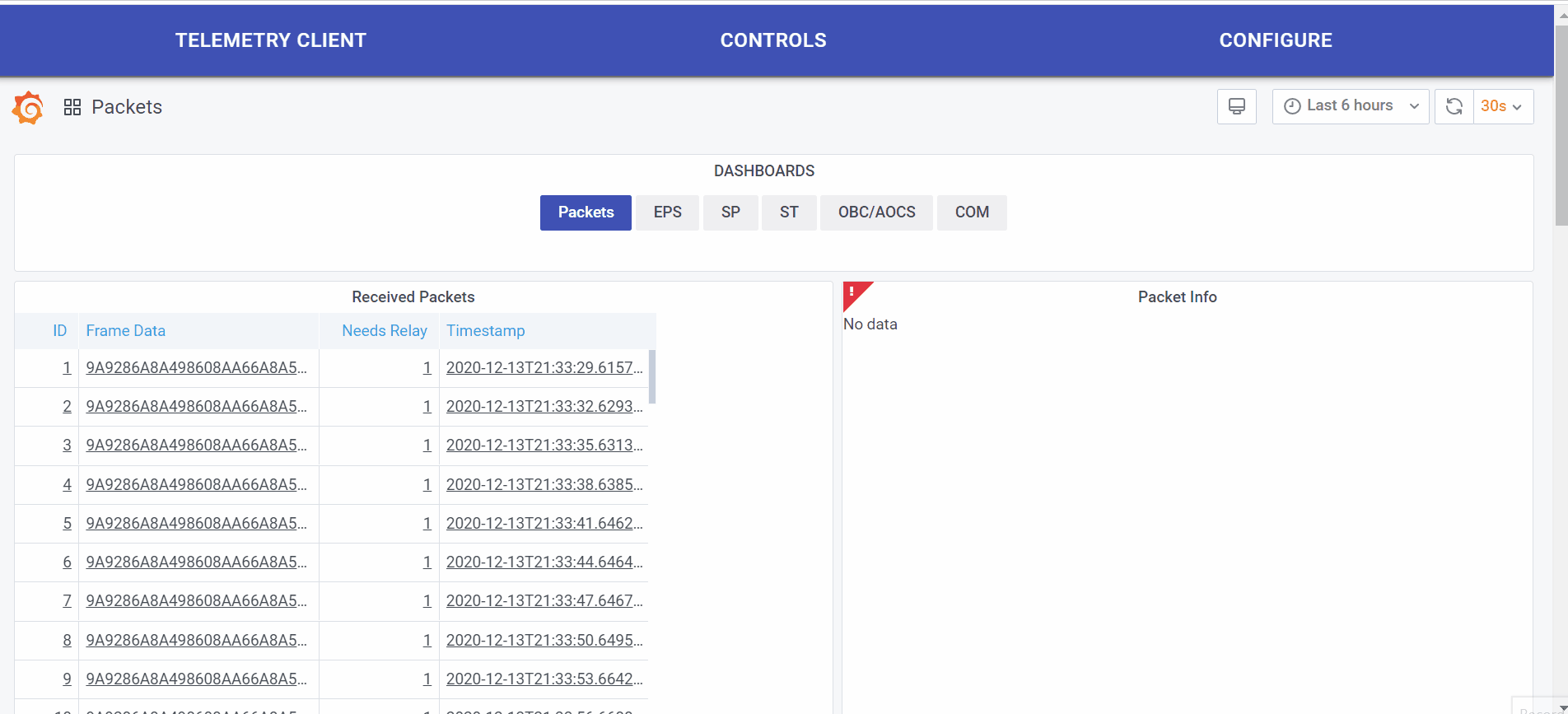-
Notifications
You must be signed in to change notification settings - Fork 2
Home
The ESTCube-2 telemetry forwarding client is open-source software, which allows radio amateurs from around the world, to downlink telemetry data sent by the satellite and see the received results locally. It relays the received packets to Mission Control of ESTCube.
This allows the ESTCube team to receive telemetry data, even when the satellite isn't accessible from Estonia. This is important, because the fly-over times of the satellite are relatively brief. The system will be a cross-platform console application that interfaces with a TNC and serves a frontend for browsers, which handles the displaying of data.
- Python 3
- requests
- flask
- flask-cors
- flask-swagger-ui
- kaitaistruct
- kiss (Use this repository)
- apsw (Github) (Do not install from PyPI!)
The libraries can be installed with pip using the requirements.txt file in the distribution folder: pip install --user -r requirements.txt
The downloads for the package of latest release can be found here.
WARNING: The client serves a front-end GUI to localhost, on a configured port (default 5000). This should not be opened to the
public through the firewall, for the application is intended to only be run in a local environment and thus has no security guards implemented.
The windows package includes an .exe file with all the required dependencies. To start the application, run the LaunchClient.bat which will start the executable file which in turn will run the client and serve the front-end on the configured port.
For Debian based distros e.g. Ubuntu Go into /client directory and NB!! sudo IS VERY IMPORTANT do following command: sudo sh linux_setup.sh this will setup everything needed in your linux machine and will create a launcher in the root folder of this application where you can then launch it
When client is running, you can open your browser, which has to have JavaScript enabled, and go to localhost:5000 (if port 5000 was not changed in configuration.ini) to view the web front-end. The graphs and tables are displayed in Grafana.

The configuration file is configuration.ini.
When the client is running, most configuration parameters can be modified through the front-end as well.
WARNING: The configuration file itself should only be changed while the client is not running. The client will only read the values from the file during startup and may overwrite the values changed during execution.
The more detailed description of configuration parameters can be seen here.
A custom path for the configuration file can also be given, when the program is run with the argument -c <file-path>.
In this case, the file path is relative to the users working directory.
The sample file contains comments explaining what the parameters do.